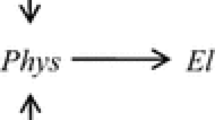Abstract
The importance of downward causation lies in showing that it shows that functional properties such as mental properties are real, although they cannot be reduced to physical properties. Kim rejects nonreductive physicalism, which includes leading functionalism, by eliminating downward causation, and thereby returns to reductionism. In this paper, I make a distinction between two aspects of function—functional meaning and functional structure and argue that functional meaning cannot be reduced to the physical level whereas functional structure can. On this basis, I further distinguish between the integer of the function, which includes the functional meaning and the functional structure, and the whole of the functional realization, and also among the strong, medial, and weak supervenience relations. So-called downward causation is indeed the relationship between the whole of the functional realization and its physical realizer, which is a whole-part relation instead of a relation between levels. As a result of understanding downward causation in this way and abandoning the principle of the causal closure of the physical world, Kim’s argument becomes invalid and nonreductive functionalism, justified.
Similar content being viewed by others
References
Chen Xiaoping (2005). “Guanyu Kezhengshi Yuanze de Xingershangxue Jichu” 关于可证实原则的形而上学基础 (“On the Metaphysical Basis of the Principle of Verifiability”). Zhexue Yanjiu, No. 6, 82–87
Chen Xiaoping (2010). “’suifuxing’ Gainian Bianxi” “随附性”概念辨析 (“An Analy Concepts of ’supervenience’”). Zhexue Yanjiu, No. 4, 71–79
Davidson, D. (1993). “Thinking Causes.” In: Heil, J. and Mele, A. eds. Mental Causation. New York: Oxford University Press
Fodor, J. (1989). “Making Mind Matter More.” Philosophical Topics, Vol. 17, 59–79
Kant, I. (2000). The Critique of Pure Reason (in Chinese), trans. by Wei Zhuomin. Wuhan: Huazhong Shifan Daxue Chubanshe
Kim J. (1984). “Concepts of Superveniece.” Philosophy and Phenomenological Research, Vol. xlv, No. 2, 153–176
Kim J. (1993). Supervenience and Mind. Cambridge: Cambridge University Press
Kim J. (1998). Mind in a Physical World. Cambridge: MIT Press
Author information
Authors and Affiliations
Corresponding author
Additional information
Translated by ZHANG Zhen from Zhexue Yanjiu 哲学研究 (Philosophical Researche 2009, (1): 96–102, with some revisions by the author
About this article
Cite this article
Chen, X. How does downward causation exist?—A comment on Kim’s elimination of downward causation. Front. Philos. China 5, 652–665 (2010). https://doi.org/10.1007/s11466-010-0120-4
Published:
Issue Date:
DOI: https://doi.org/10.1007/s11466-010-0120-4




